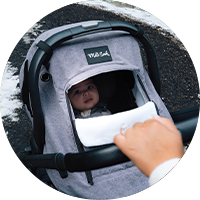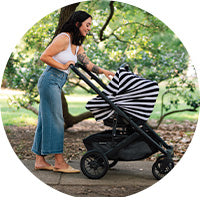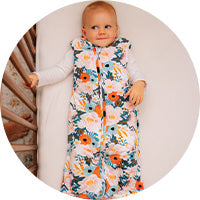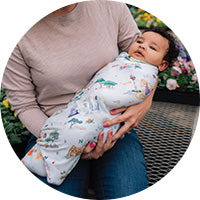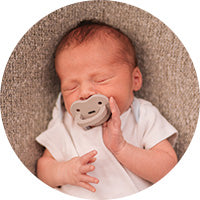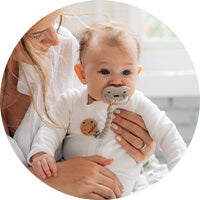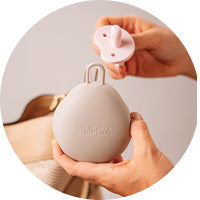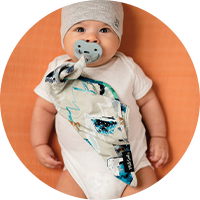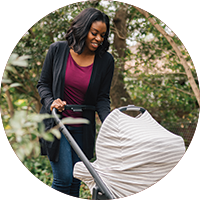Comprehensive Guide to Breastfeeding: Tips, Techniques, and Essential Items
Breastfeeding is a natural and beneficial way to nourish your baby. It can also be a rewarding experience for both mother and child. However, many new mothers face challenges in the early days and weeks of breastfeeding. This comprehensive guide or Breastfeeding tips will provide you with valuable tips to help, including how to breastfeed in public, address common problems, enhance comfort, and essential items to have on hand.
Tips for Successful Breastfeeding

- Get Comfortable: Choose a quiet, comfortable space to start breastfeeding. A supportive chair or bed can make a big difference. Use pillows to support your arms and back.
- Latching: A proper latch is crucial for effective breastfeeding. Your baby should take a good portion of the areola (the dark area around the nipple) into their mouth, not just the nipple. Look for signs of a good latch: your baby's lips should be flanged out, and you should hear swallowing sounds.
- Frequency: Newborns often need to feed every 1.5 to 3 hours. Trust your baby's hunger cues; they might root, suck on their hands, or become fussy. The more your baby feeds, the more milk you will produce.
- Stay Hydrated and Nourished: Drink plenty of water and eat a balanced diet rich in nutrients. Foods like oats, nuts, and green leafy vegetables can help boost your milk supply.
- Skin-to-Skin Contact: After birth, practice skin-to-skin contact with your baby. This helps stimulate breastfeeding instincts and promotes bonding.
- Relax: Stress can impact your milk supply. Take deep breaths, listen to calming music, or engage in activities that help you relax before breastfeeding.

Tips for Breastfeeding in Public
Breastfeeding in public can be daunting for many new mothers. However, with the right preparation and mindset, you can feed your baby comfortably and confidently. Here are some tips:
- Plan Ahead: Familiarize yourself with breastfeeding-friendly locations in your area, such as cafes, parks, and shopping centers with nursing rooms.
- Use a Nursing Cover: Products like Milk Snob nursing covers provide privacy while allowing you to breastfeed discreetly. These covers are designed for ease of use, allowing quick access to your baby without exposing too much skin.
- Practice at Home: Before venturing out, practice breastfeeding in front of a mirror at home to feel more comfortable with your positioning and technique.
- Wear Comfortable Clothing: Opt for nursing-friendly clothing that allows easy access to your breasts. Consider tops with buttons or stretchy materials.
- Bring Support: If you feel anxious about breastfeeding in public, bring a friend or family member along for support. Having someone you trust nearby can help ease your nerves.
- Stay Confident: Remember that breastfeeding is a natural and beautiful way to nourish your baby. If someone makes you feel uncomfortable, try to focus on your baby and enjoy the moment.
Common Breastfeeding Problems
While breastfeeding is a natural process, it doesn’t always come easily. Here are some common breastfeeding problems and tips on how to address them:
- Sore Nipples: Many mothers experience sore or cracked nipples in the early days. Ensure your baby is latching correctly. Applying breast milk to your nipples after feeding and allowing them to air dry can help promote healing.
- Low Milk Supply: If you’re concerned about your milk supply, try to nurse frequently and pump between feedings to stimulate production. Consult with a lactation consultant for additional support.
- Engorgement: Engorgement occurs when your breasts are overly full, making it difficult for your baby to latch. To relieve discomfort, try nursing more frequently or pump a little milk before feeding.
- Blocked Ducts: A blocked milk duct can cause painful lumps in the breast. Nursing frequently, applying warm compresses, and gentle massage can help unblock the duct. If the problem persists, consult a healthcare provider.
- Fussiness at the Breast: If your baby becomes fussy during breastfeeding, it could be due to a variety of reasons, including hunger, discomfort, or a need to burp. Take breaks, burp your baby, and try different feeding positions.
Make Breastfeeding More Comfortable
Creating a comfortable breastfeeding experience can make a significant difference. Here are some tips to enhance your comfort during breastfeeding:
- Invest in a Nursing Pillow: A nursing pillow can help support your baby at the right height and take pressure off your arms and back.
- Adjust Your Position: Experiment with different breastfeeding positions, such as the football hold, side-lying position, or cross-cradle hold. Find what feels most comfortable for you and your baby.
- Wear Supportive Bras: Invest in a good-quality nursing bra that provides adequate support without being too tight.
- Use Breastfeeding Creams: Consider using nipple creams or ointments that contain natural ingredients to soothe sore nipples.
- Take Breaks: If you feel uncomfortable during a feeding session, don’t hesitate to take a break and switch positions. It’s essential to listen to your body.
- Practice Relaxation Techniques: Incorporate breathing exercises or gentle stretches before breastfeeding to help ease tension and promote relaxation.
Essential Items for Breastfeeding Moms
Having the right essential items can make your breastfeeding journey smoother. Here’s a list of must-have items for breastfeeding moms:
- Nursing Covers: A nursing cover, like the Milk Snob cover, offers privacy and comfort while breastfeeding in public. It’s versatile, allowing you to use it for car seat covers or shopping cart covers as well.
- Nursing Pillow: Provides support for your baby and helps maintain a comfortable position during feeding.
- Breast Pump: A quality breast pump can help you express milk for storage and ease engorgement. Consider a manual or electric pump based on your needs.
- Storage Bags: Invest in breast milk storage bags for freezing or refrigeration, making it easy to have milk ready when needed.
- Nipple Cream: Helps soothe sore or cracked nipples, promoting healing.
- Hydration Bottle: Staying hydrated is essential for milk production. Keep a water bottle nearby during feeding sessions.
- Breastfeeding Journal: Keeping track of feeding times, durations, and any challenges can help you identify patterns and solutions.
- Comfortable Clothing: Invest in nursing bras and tops that allow easy access while keeping you comfortable and stylish.
Conclusion
Breastfeeding is a unique journey that varies for each mother and baby. By understanding the tips for successful breastfeeding, navigating public feedings, addressing common problems, and creating a comfortable environment, you can make the experience rewarding for both you and your baby. With the right essentials, like the Milk Snob nursing cover, you can breastfeed with confidence, comfort, and style, allowing you to focus on the beautiful bond you share with your little one.





